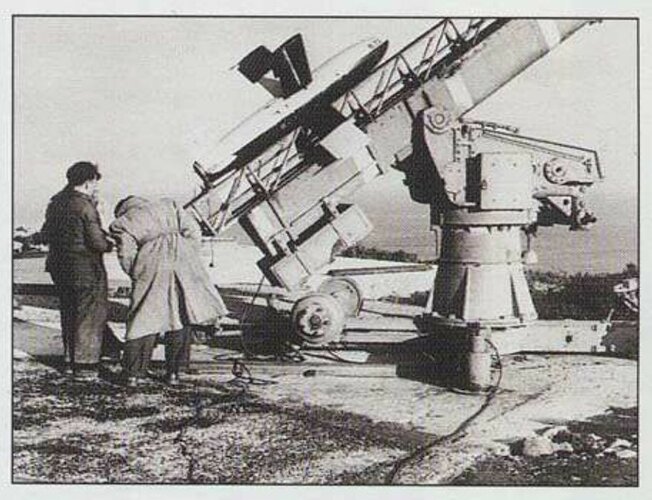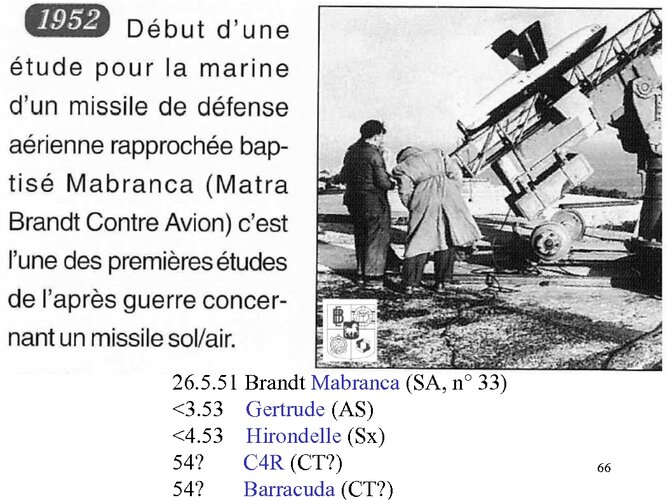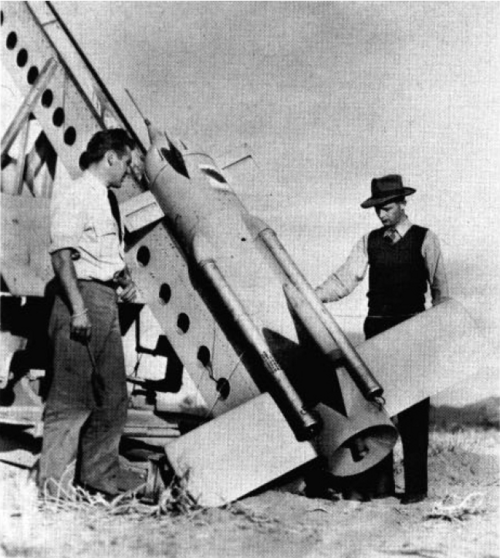MABRANCA (MArine BRANdt Contre Avion) was a short-range surface-to-air naval missile developed by Brandt in its La-Ferté-Saint-Aubin plant.
The booklet entitled "1938-1988 ; 50 ans à l'usine de Chevau" explains: « The study for the navy of a short-range air defense missile, named Mabranca, whose engineer in charge was René Pataud, began in 1952. After a few more or less successful firings, this study was abandoned in 1956. »
The firings were made at CERES (Île du Levant) but it seems that preliminary tests took place as early as 1951 in Cap Camarat. The launch ramp was later used to test Masurca C1R models.
Based on the attached photo, it can be estimated that this missile was approximately 1.9 m long with a diameter of 0.3 m and a wingspan of 1.5 m.
Any additional information would be welcome.
The booklet entitled "1938-1988 ; 50 ans à l'usine de Chevau" explains: « The study for the navy of a short-range air defense missile, named Mabranca, whose engineer in charge was René Pataud, began in 1952. After a few more or less successful firings, this study was abandoned in 1956. »
The firings were made at CERES (Île du Levant) but it seems that preliminary tests took place as early as 1951 in Cap Camarat. The launch ramp was later used to test Masurca C1R models.
Based on the attached photo, it can be estimated that this missile was approximately 1.9 m long with a diameter of 0.3 m and a wingspan of 1.5 m.
Any additional information would be welcome.





